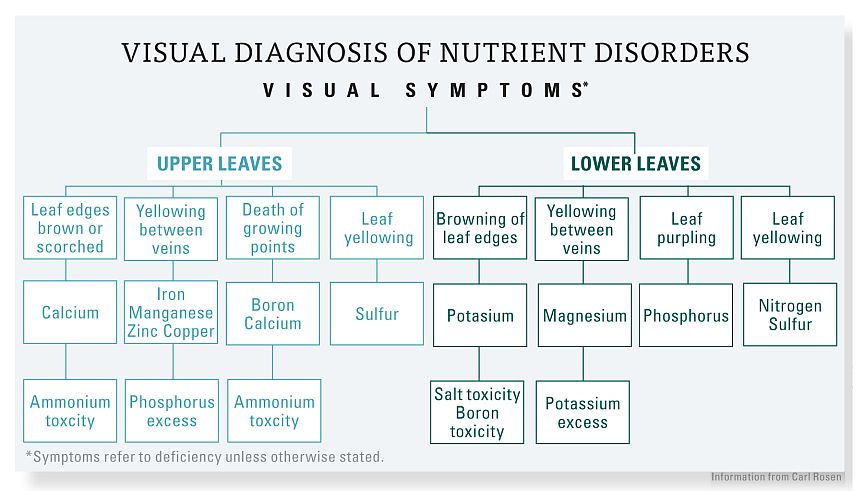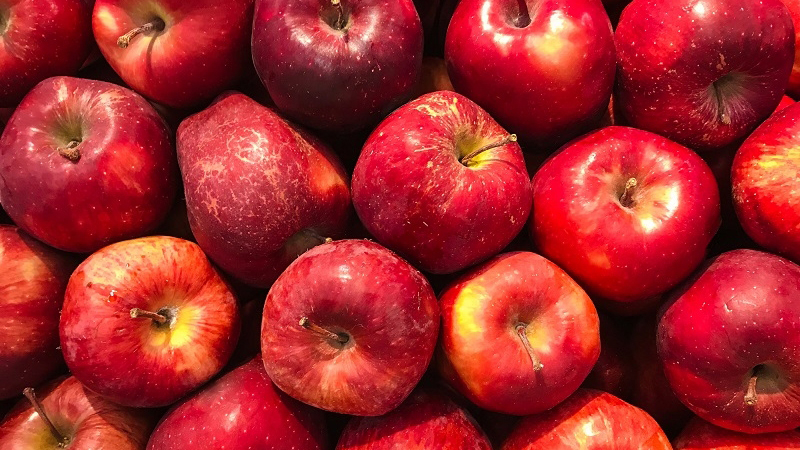How To Become A Soil Sleuth
 You have heard time and again that it is critical to know what it is in your soil to determine if there is a deficiency. To find out which nutrients your soil may have in excess or be lacking for a particular crop, many researchers strongly suggest conducting regular soil tests.
You have heard time and again that it is critical to know what it is in your soil to determine if there is a deficiency. To find out which nutrients your soil may have in excess or be lacking for a particular crop, many researchers strongly suggest conducting regular soil tests.
We talked with Carl Rosen, a professor and head of the Department of Soil, Water, and Climate at the University of Minnesota, about the importance of understanding the components of a nutrient management program, how nutrient interactions can impact plant growth, and what you need to know to correctly diagnose a problem.

Carl Rosen
What components make up a nutrient management program?
Rosen: The main components include soil testing and tissue analysis to determine the proper source and rate of nutrients to apply. By “source” I mean that you will need to select a fertilizer product that will meet the needs of the crop based on the recommendation. For example, if your soil is high in phosphorus and low in potassium you will want to select a fertilizer source that provides potassium but lower amounts of phosphorus or no phosphorus.
You also need to consider application timing, which depends on the crop to some degree, and it also depends on your soil. For example, on sandy soils you will want to split applications of mobile nutrients like nitrogen, because these soils are more vulnerable to nutrient losses. On heavier textured clay soil, you may be able to get by with fewer applications.
Next, you need to consider how you will place the nutrient. Are you going to broadcast and incorporate it or are you going to band it closer to the plant? Nutrients like phosphorus are not mobile in the soil and the crop will often benefit from placing it closer to the developing roots. This is all part of the Four Rs of nutrient management: the right source, the right rate, the right timing, and the right placement.
Something else to consider for a nutrient management program includes keeping good records each year to help fine-tune a fertilizer program.
In spite of having a program in place, nutrient problems still occur. What causes the problems?
Rosen: Weather and soil variability can be reasons why nutrient problems still occur. Excessive rainfall can leach out some nutrients like nitrogen, and there may be parts of the field that were not properly represented by the soil test. For example, there could be pockets of your field that are very chlorotic due to high pH. Soil variability may also be the result of previous practices, such as past uneven applications of manure, fertilizer, or compost.
Why are the effects of each nutrient element so critical in the nutrient management program?
Rosen: There are 14 essential elements that are derived from the soil: nitrogen, phosphorus, potassium, calcium, magnesium, sulfur, boron, chlorine, iron, manganese, zinc, copper, molybdenum, and nickel. If one of these elements is lacking then yield or quality loss can occur. This does not mean that all 14 elements need to be applied every time a crop is grown. Depending on the soil, crop being grown, and previous management, only a few of the key nutrients may be needed. Finding out what may be lacking in the soil can be determined by a soil test and tissue analysis.
How can specialty crop growers correctly diagnose a nutrient disorder?
Rosen: They need to do a soil test for pH, organic matter, phosphorus, and potassium. Additional tests for soluble salts as well as secondary and micronutrients are also suggested depending on the soil and extent of the problem. Plus, they need to do a plant (or sometimes called tissue) analysis, which is particularly useful for fruit crops, and they need to pay attention to visual symptoms.
Soil testing is more predictive, particularly for annual crops, whereas plant analysis basically is an indicator of what is going on in the plant itself and how well the soil is able to provide the nutrients.
Sometimes, depending on the root system, plant analysis can detect problems that the soil test doesn’t. Plant analysis for annual crops should be used in conjunction with a soil test. We tend to emphasize plant analysis more for perennial crops. For example, crops like apples or grapes, tissue samples along with soil samples collected in the current year can be used to guide fertilizer recommendations for the following year.
What are five tips you can offer fruit and vegetable growers to help them correctly identify what is going on in their fields?
1. Nutrient disorders usually occur in specific patterns and on specific plant parts (see figure).
2. Some nutrient disorders can be confused with herbicide damage or diseases. These symptoms are generally not as uniform as nutrient deficiencies.
3. Use soil and tissue analysis to help confirm what the problem might be.
4. When possible, compare the analysis of soil or tissue from plants that show symptoms with those that do not show symptoms.
5. Contact an Extension agent or a consultant to help in the diagnosis.










